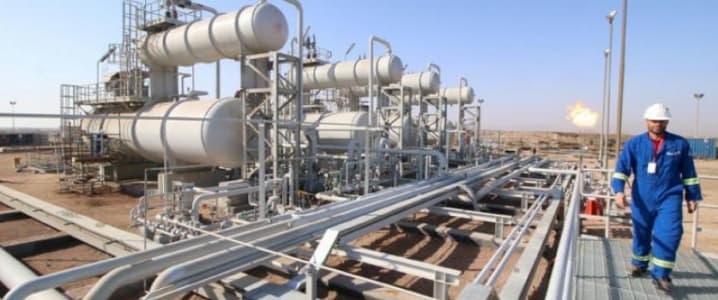Fears of weakening demand continue to drag down oil prices, which in turn could cut into supply growth.
“Concerns about demand and the escalating trade conflict are still keeping the oil market in a stranglehold,” Commerzbank wrote on Tuesday. Brent fell below $60 per barrel this week for the first time in six months as expectations surrounding a slowing global economy set in following the escalation of the U.S.-China trade war.
“We believe the oil market is starting to price in the fear of a severe and multiyear breakdown in US-China economic relations,” Standard Chartered wrote in a note.
“Money-manager positioning in oil is already heavily concentrated on a negative trade view.” The investment bank said that the negative positioning from speculators would “deepen and extend further along the curve across all risk assets.” The bank slashed its forecasted 2019 Brent price to just $66 per barrel, down from $74 previously, and it also cut its 2020 price to $70 from $83. For WTI, Standard Chartered lowered its estimate to $57 from $66 previously.
The trade war could undercut global economic growth, which in turn will drag down oil demand. Major forecasters such as the IEA, EIA and OPEC have repeatedly slashed their demand growth estimate as the economic outlook has darkened. The IEA stuck with its 1.2-million-barrel-per-day forecast in its July Oil Market Report, which it based on the assumption that the trade war would ease and growth would accelerate in the second half of the year.
With the trade war only escalating, more downward revisions seem inevitable. For its part, Standard Chartered said that demand growth is on track to reach only 0.94 mb/d. As “consensus started the year above 1.4mb/d growth, we think the move to a sub-1mb/d consensus will likely have a strongly negative effect on sentiment, reinforcing the basis for lower prices,” the bank concluded. Related: The Reason China Is Winning The Battery Race
Meanwhile, Vitol Group estimates demand growth at a paltry 650,000 bpd this year.
But, of course, lower prices would feed through to the supply side as well. The shale sector is already suffering from significant financial stress. Lower prices would only magnify the pressure on struggling E&Ps.
The EIA warned about the slowdown in U.S. oil production, after years of blistering growth. “EIA expects monthly growth in Lower 48 onshore production to slow during the rest of the forecast period, averaging 50,000 b/d per month from the fourth quarter of 2019 through the end of 2020, down from an average of 110,000 b/d per month from August 2018 through July 2019,” the agency said in its latest Short-Term Energy Outlook released on Tuesday. Still, the EIA said U.S. production would average 12.3 mb/d this year, which is down only slightly from 12.4 mb/d forecasted in previous months.
One of the reasons that production growth may not be derailed by lower prices is that new drilling is increasingly in the hands of the oil majors, rather than the independent shale companies that drove growth in the Permian in the past. As shale E&Ps cut costs and idle rigs, the integrated oil majors – Chevron, ExxonMobil and ConocoPhillips, primarily – continue to spend heavily.
It’s not clear that their returns are any better, with data on the specifics a bit murky. Analysts generally assume that the majors have a better ability to turn a profit than the rest of the shale industry. Goldman Sachs wrote in a report that the “concentration of productivity/efficiency gains and production growth [are] in the hands of fewer producers, driven by technology and shale evolution that prioritizes contiguous acreage.” Related: Oil Craters On Fears of Currency War
The majors boast of low breakevens and their “manufacturing approach” to shale drilling, which should keep costs low. But the reality is that the majors have the ability to post losses in shale for years in the pursuit of positive cash flow, because they are making money in other sectors.
The Institute for Energy Economics and Financial Analysis took ExxonMobil to task, pointing out that even as production rose in the second quarter, so did the company’s debt as it needed to borrow to cover its dividend. “The only difference between ExxonMobil and the dozens of companies that are failing under the fracking sector’s inability to prove financially sustainable, is that the once-mighty oil giant has more assets to burn through before it hits bottom,” Tom Sanzillo and Kathy Hipple wrote in the IEEFA report.
Sinking oil prices won’t help matters. On Wednesday, WTI fell to the low-$50s, a six-month low. Sentiment is deteriorating rapidly and a price handle beginning with a “4” may not be far away.
By Nick Cunningham of Oilprice.com
More Top Reads From Oilprice.com:
- Japan Is Bargain Hunting As LNG Prices Slump
- US: Iran Ships Pose As US Warhips To Jam Oil Tankers’ GPS
- Saudis Scramble To Arrest Oil Price Slide

















